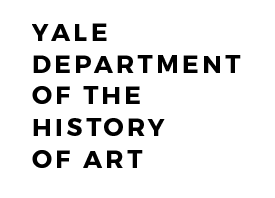Quincy Ngan
B.A., Chinese University of Hong Kong
Ph.D., University of Chicago
Quincy Ngan received his B.A. and doctoral degrees from the Chinese University of Hong Kong and the University of Chicago, respectively. Before joining Yale, he was a visiting assistant professor at the University of Iowa. His research focuses primarily on the visual and material cultures of early modern China, with particular interest in Chinese painting, color, medium, materiality, body, drama, prints, words and images, and gender and sexuality.
Quincy is especially intrigued by the multivalent significance of azurite—one of the most important and versatile minerals in traditional China. Crushed, the mineral was a potent drug that was used to heal eye ailments, as an alchemical ingredient for making elixirs, as a precious commodity subjected to taxation, and as a blue in arts. Titled The Matter of Color: Azurite Blue in Early Modern China, his first book project explores the remarkable life of azurite along the dynamics among modernity and socioeconomic changes, words and images, chromophobia and chromophilia, and spatiality and temporality. Blending scientific analysis of pigments and careful reading of artworks and historical records, this project shifts the conversation around Chinese painting away from traditional literati viewpoints and medium-specific approaches, challenging common assumptions about color as both a material and a field of study. Since the completion of the book manuscript, Quincy has become interested in color, pigments, and dyes more broadly, seeking to investigate red via a variety of colorants ranging from cinnabar to safflower to cochineal.
The wide-ranging usages of pigments and dyes transcend the medial boundaries among painting, textile, sculpture, architecture, and literature, which prompts Quincy to explore the concept of intermediality. Quincy’s second book project explores the relationship between drama and Chinese painting from the fourteenth to seventeenth century. It examines paintings inspired by dramas and the significance of painting as a prop or key plot points in multiple drama scripts, along with the impact of theaters and illustrated scripts on painters. This project is inspired by Art in Drama: Reading Dramatic Texts at the Interstices of Performance Culture and Visual Culture, an ACLS-funded conference that Quincy co-organized with Dr. Peng Xu in 2019.
Quincy has taught a variety of classes, namely Chinese Painting and Culture, Arts of China, Asian Art and Culture, Time in Chinese Art, Chinese Skin Problems, Contemporary Art and Culture in China, Gender and Sexuality in Asian Art, Chinese Paintings at the YUAG, Chinese Art Modernity, and Global Materiality of Color.
SELECTED PUBLICATIONS:
“The New Emperor’s Cloths: Indigo and Allusion in Two Hongzhi Year One Paintings,” Archives of Asian Art 73.1 (2023): 1-23.
“Destined to Rule: The Symbolism of the Jade-Colored Throne in Emperor Yongle’s Portrait,” Source: Notes in the History of Art 42.1 (2022): 14-24.
“Collecting Azurite and Malachite as Curios and Medicines in Late Imperial China,” Ming Qing Yanjiu 24.1 (2020): 67-102.
“The Significance of Azurite Blue in Two Ming Dynasty Birthday Portraits,” Metropolitan Museum Journal 53 (2018): 46-62.
“Skin and Dematerialization of the Body in Xiang Jing’s (b. 1968) Figure Sculptures,” Yishu: Journal of Contemporary Chinese Art 17.4 (2018): 34-49.
“The Soul Under the Skin – A Dialogue between Xiang Jing and Quincy Ngan,” in Xiang Jing: Works, Documents, and Annotations, edited by Xiang Jing (China Citic Press, 2017), 1002-29.
“Secai tanwei – Tan Qiu Ying de shese jifa (To see big things in small – On the application of colors in Qiu Ying’s paintings),” National Palace Museum Monthly 379 (2014): 40-51.
